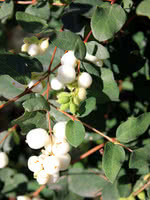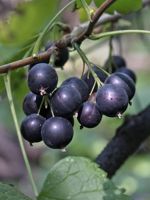Mon-Fri 9am - 5pm Mountain time
Common Snowberry vs Northern Black Currant
Symphoricarpos albus
Ribes hudsonianum
CUSTOM GROW
Common Snowberry is a small deciduous shrub with characteristic white to pink flowers and clusters of white fruit.
This North American native species is very adaptable, and can be used for erosion control in riparian and restoration areas. Snowberry's fruit attracts wildlife, and livestock can consume the berries without issue.
Northern Black Currant is a native deciduous shrub found across Canada and the northern United States. Dark purple to black berries that ripen in summer and provide food for wildlife and humans. Fragrant yellow-green flowers that attract a wide variety of pollinators.
This shrub is well adapted to moist soils and can even survive periods of flooding. It has an interesting bronze colour in fall.
Common Snowberry Quick Facts
Northern Black Currant Quick Facts
Toxicity: berries toxic to humans

